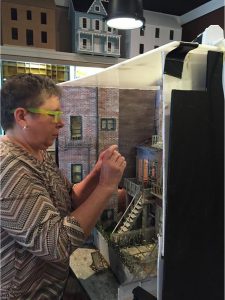Where Was Rear Window Filmed?
Rear Window Filmed
During the 1950’s, the world was becoming dominated by television. A growing number of moviegoers were opting for watching television rather than going to the movies. This meant that films like Rear Window were made on confined sets at Paramount Studios. This was a masterclass in tension building and is studied as one of the greatest film thrillers of all time.
Rear Window films was a huge hit when it was released. It starred James Stewart and Grace Kelly. Hitchcock said that Stewart was his favourite actor to work with. The film was made in Technicolor and was based on the short story “It Had to Be Murder” written by Cornell Woolrich.
We are now widely recognised as one of the leading experts in window films and car tinting with over 25000 happy customers across the United Kingdom. However, as we have grown, we have made sure that we are still just as committed to delivering exceptional standards so you can be totally confident in the quality of our workmanship.

The plot of Rear Window is about a recuperating news photographer (James Stewart) who spends his time looking out of his rear window. Eventually, he thinks his neighbour has murdered his wife. When the police come to his apartment to investigate, they are told that the wife has moved to Los Angeles. Hitchcock used this scene as a commentary on the rise of television and the increasing popularity of film in the 1950’s.
Where Was Rear Window Filmed?
Alfred Hitchcock is well known for his ability to create suspense, using a combination of cinematography and set design. The apartment complex in Rear Window was one of the largest sets ever built on the Paramount lot. It consisted of thirty-one scale size apartments. It was 185 feet long and forty feet high. It cost $75-$100k to build. The set was so large that the studio floor had to be excavated to allow for the necessary height.
The set also included functional drainage for rain scenes. There were over 1,000 lights that were modified to reflect varying sun intensity. The set also featured a courtyard below the studio’s basement. It was modeled after Greenwich Village, New York. During filming, Robert Capa was a photojournalist who lived in Greenwich Village. He was also injured while on the job.
The apartment in Rear Window was built especially for the film. Hitchcock said that the plot of the film was his idea and that it was “pure cinematic.” Alfred Hitchcock said that the idea of a film where the protagonist was watching from his rear window was “a pure cinematic idea.” It was a salvo against television, and it was one of the first films that used the widescreen format.
Many films that have borrowed from Hitchcock’s style have been referred to as “Hitchockian.” Philip French, in his book Disturbia: The Legacy of Alfred Hitchcock, describes Rear Window as “limp teenage by-numbers version of Rear Window.” The film is studied as a masterclass in suspense and tension-building.
Alfred Hitchcock also used the idea of voyeurism in Rear Window. Voyeurism was originally defined as a sexual pleasure derived from watching others. However, it has been loosely defined to mean observing others. Alfred Hitchcock was a great fan of German Expressionism. He said that he was influenced by the work of German artists who had an interest in the real and unreal. The film expresses the themes of voyeurism and Scopophilia.